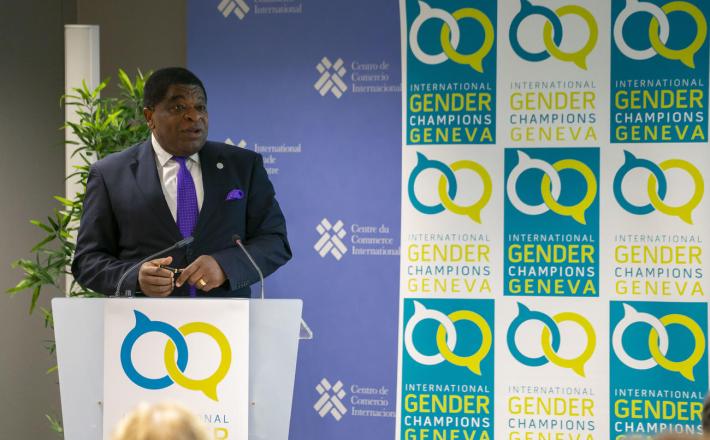COVID-19: What does it mean for gender?
Source: Inter-Parliamentary Union
By the Secretariat of the International Gender Champions (IGC) and Martin Chungong, Chair of the IGC Global Board and Secretary General of the IPU.
In times of crisis, gender equality is a goal that is often temporarily put on hold. Gendered dimensions tend to be regarded as secondary, but emergency responses that fail to incorporate a gender lens are highly likely to exacerbate existing inequalities, and in turn exacerbate outbreaks. The Ebola outbreak in 2014, Zika in 2015–2016, SARS, swine flu and bird flu all had deep and long-lasting negative effects on gender equality.
COVID-19, the coronavirus pandemic which has now spread to over 185 countries and territories, is no different. The coronavirus is an unprecedented global threat which poses great challenges to our governance structures. Gender-responsive actions and practices are critical to ensure that this crisis does not impact women significantly more than men.
Dr. Tedros Adhanom, Director-General of the World Health Organization (WHO) has shared with the International Gender Champions network his view that “The response to the COVID-19 pandemic must be gender-sensitive and responsive. Not only are women and children some of the most fragile population groups whose needs can be overlooked in health emergencies, but 70 per cent of the health work force caring for those affected is also made up of women. WHO is committed to using a gender lens to continuously evaluate and improve our response efforts.”
While current data suggest that there do appear to be sex differences in mortality and vulnerability to the disease, with more men than women dying, potentially due to sex-based immunological or gendered differences, such as patterns and prevalence of smoking, the available sex-disaggregated data are incomplete and early assumptions need to be made with caution. Many factors put women at a higher risk in terms of health outcomes and social and economic consequences.
Click here to read the full opinion piece.

By the Secretariat of the International Gender Champions (IGC) and Martin Chungong, Chair of the IGC Global Board and Secretary General of the IPU.
In times of crisis, gender equality is a goal that is often temporarily put on hold. Gendered dimensions tend to be regarded as secondary, but emergency responses that fail to incorporate a gender lens are highly likely to exacerbate existing inequalities, and in turn exacerbate outbreaks. The Ebola outbreak in 2014, Zika in 2015–2016, SARS, swine flu and bird flu all had deep and long-lasting negative effects on gender equality.
COVID-19, the coronavirus pandemic which has now spread to over 185 countries and territories, is no different. The coronavirus is an unprecedented global threat which poses great challenges to our governance structures. Gender-responsive actions and practices are critical to ensure that this crisis does not impact women significantly more than men.
Dr. Tedros Adhanom, Director-General of the World Health Organization (WHO) has shared with the International Gender Champions network his view that “The response to the COVID-19 pandemic must be gender-sensitive and responsive. Not only are women and children some of the most fragile population groups whose needs can be overlooked in health emergencies, but 70 per cent of the health work force caring for those affected is also made up of women. WHO is committed to using a gender lens to continuously evaluate and improve our response efforts.”
While current data suggest that there do appear to be sex differences in mortality and vulnerability to the disease, with more men than women dying, potentially due to sex-based immunological or gendered differences, such as patterns and prevalence of smoking, the available sex-disaggregated data are incomplete and early assumptions need to be made with caution. Many factors put women at a higher risk in terms of health outcomes and social and economic consequences.
Click here to read the full opinion piece.